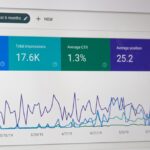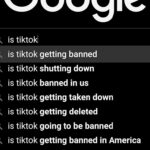In the digital landscape, where visual content plays an increasingly pivotal role, Image SEO has emerged as a critical component of search engine optimization strategies. Image SEO refers to the practice of optimizing images on a website to enhance visibility in search engine results pages (SERPs). This involves various techniques aimed at improving the discoverability of images, ensuring they contribute positively to overall site performance and user experience.
As the internet becomes more visually driven, understanding the nuances of Image SEO is essential for businesses and content creators alike. Images are not merely decorative elements; they serve as powerful tools for communication and engagement. With the rise of platforms like Instagram, Pinterest, and TikTok, users are more inclined to consume visual content than ever before.
Consequently, search engines have adapted their algorithms to prioritize high-quality images that provide value to users. This shift underscores the necessity for webmasters and marketers to adopt effective Image SEO practices, ensuring that their visual content is not only appealing but also optimized for search engines. By doing so, they can enhance their online presence, drive traffic, and ultimately achieve their business objectives.
Key Takeaways
- Image SEO is crucial for improving the visibility and ranking of visual content on search engines.
- In 2025, the importance of image SEO will continue to grow as more users rely on visual search and voice search technology.
- Tips for optimizing visual content include using high-quality images, relevant keywords, and descriptive file names.
- Utilizing alt text and descriptions is essential for providing context to search engines and visually impaired users.
- Choosing the right file format and size can impact page load speed and overall user experience, making it important for image SEO.
The Importance of Image SEO in 2025
The Future of Search Engine Analysis
The ability of search engines to analyze images based on context, relevance, and quality will dictate how well a website performs in SERPs. Moreover, the proliferation of mobile devices has transformed how users interact with content. In 2025, it is projected that mobile searches will account for a significant majority of all online queries.
Optimizing for Mobile Viewing
Given that mobile users often seek quick, visually engaging information, optimizing images for mobile viewing will be crucial. This includes ensuring that images load quickly and are appropriately sized for various screen dimensions.
Improved Engagement and Conversion Rates
As user experience continues to be a key ranking factor, businesses that invest in Image SEO will likely see improved engagement metrics and higher conversion rates.
Tips for Optimizing Visual Content

To effectively optimize visual content for search engines, several best practices should be implemented. First and foremost, selecting high-quality images is essential. Images should be clear, relevant, and visually appealing to capture the attention of users.
Blurry or poorly composed images can detract from the overall user experience and may lead to higher bounce rates. Additionally, using original images rather than stock photos can enhance authenticity and help establish a unique brand identity. Another critical aspect of optimizing visual content is ensuring that images are properly compressed without sacrificing quality.
Large image files can significantly slow down page load times, negatively impacting user experience and search rankings. Tools such as Adobe Photoshop or online compressors like TinyPNG can help reduce file sizes while maintaining image clarity. Furthermore, implementing responsive design principles ensures that images adapt seamlessly to different devices and screen sizes, providing an optimal viewing experience for all users.
Utilizing Alt Text and Descriptions
Alt text, or alternative text, serves as a vital component of Image SEO. It provides a textual description of an image, which is particularly important for visually impaired users who rely on screen readers to navigate the web. Additionally, alt text helps search engines understand the content of an image, contributing to its indexing and ranking in search results.
Crafting descriptive and relevant alt text is essential; it should accurately convey the image’s content while incorporating relevant keywords naturally. In addition to alt text, providing detailed image descriptions can further enhance SEO efforts. While alt text is typically concise, descriptions can offer more context about the image’s relevance to the surrounding content.
This additional information can improve user engagement by providing insights into how the image relates to the overall topic. For instance, if an article discusses healthy eating and features an image of a colorful salad, a description could elaborate on the ingredients and nutritional benefits, thereby enriching the user’s understanding and experience.
Choosing the Right File Format and Size
Selecting the appropriate file format for images is crucial in optimizing them for web use. The most common formats include JPEG, PNG, GIF, and WebP, each with its own advantages and disadvantages. JPEG is widely used for photographs due to its ability to compress images while retaining quality; however, it does not support transparency.
PNG is ideal for images requiring transparency or those with text and graphics but tends to have larger file sizes. GIFs are popular for simple animations but are limited in color depth. WebP offers superior compression rates and supports both transparency and animation but may not be universally supported across all browsers.
In addition to choosing the right format, resizing images appropriately is essential for maintaining optimal performance. Images should be scaled to fit their display dimensions on a webpage rather than relying on HTML or CSS to resize them after loading. This practice not only improves load times but also enhances user experience by ensuring that images appear crisp and clear on all devices.
Tools like ImageMagick or online services can assist in resizing images efficiently while preserving quality.
Implementing Structured Data Markup

Structured data markup is a powerful tool that can enhance Image SEO by providing search engines with additional context about visual content. By implementing schema markup specific to images, webmasters can help search engines better understand the content and purpose of their images. This can lead to rich snippets in search results, which often include images alongside standard text results, increasing visibility and click-through rates.
For instance, using schema.org’s ImageObject markup allows webmasters to specify details such as the image’s title, description, and copyright information. This structured data not only aids in indexing but also enhances the likelihood of appearing in Google Images results or other visual search features. As visual search technology continues to evolve, leveraging structured data will become increasingly important for businesses aiming to maximize their online presence through visual content.
Leveraging Image Sitemaps
An image sitemap is a specialized XML sitemap that specifically lists images on a website, providing search engines with direct access to visual content. By creating an image sitemap, webmasters can ensure that all images are indexed properly, even those that may not be easily discoverable through standard crawling methods. This is particularly beneficial for websites with extensive visual content or those utilizing dynamic image generation techniques.
When creating an image sitemap, it is essential to include relevant information such as image titles, captions, and geographic location if applicable. Submitting this sitemap through Google Search Console can expedite the indexing process and improve the chances of images appearing in search results. Additionally, regularly updating the image sitemap as new content is added ensures that search engines remain aware of all available visual assets.
Monitoring and Analyzing Image Performance
To gauge the effectiveness of Image SEO efforts, monitoring and analyzing image performance is crucial.
By examining these metrics, webmasters can identify which images resonate most with their audience and adjust their strategies accordingly.
Furthermore, tracking organic search traffic specifically related to image searches can reveal valuable information about how well optimized images are performing in SERPs. Analyzing this data allows businesses to refine their Image SEO tactics continually—whether by adjusting alt text for better keyword alignment or experimenting with different file formats based on performance trends. By maintaining a proactive approach to monitoring image performance, businesses can ensure that their visual content remains competitive in an ever-evolving digital landscape.
If you’re interested in learning more about the world of influencers and how they can impact your SEO strategy, check out this article on The Power of Influencer Marketing in 2025. This article delves into the importance of collaborating with influencers to boost your brand’s visibility and reach online. By incorporating influencer marketing into your overall SEO strategy, you can effectively optimize your visual content and drive more traffic to your website.
FAQs
What is Image SEO?
Image SEO refers to the process of optimizing visual content, such as images and videos, to make them more searchable and visible on search engines. This involves using relevant keywords, descriptive file names, and alt text to improve the chances of the visual content appearing in search results.
Why does Image SEO matter?
Image SEO matters because it can help improve the visibility and discoverability of visual content on search engines. By optimizing images and videos with relevant keywords and descriptive information, businesses and individuals can attract more organic traffic to their websites and increase their online presence.
How can I optimize visual content for SEO in 2025?
In 2025, you can optimize visual content for SEO by following these tips:
– Use high-quality images and videos
– Choose relevant file names and use descriptive alt text
– Compress images for faster loading times
– Utilize structured data markup for images
– Create an image sitemap to help search engines index visual content
What are the benefits of optimizing visual content for SEO?
The benefits of optimizing visual content for SEO include:
– Increased visibility and discoverability on search engines
– Higher organic traffic to your website
– Improved user experience with faster-loading images and videos
– Enhanced online presence and brand awareness















